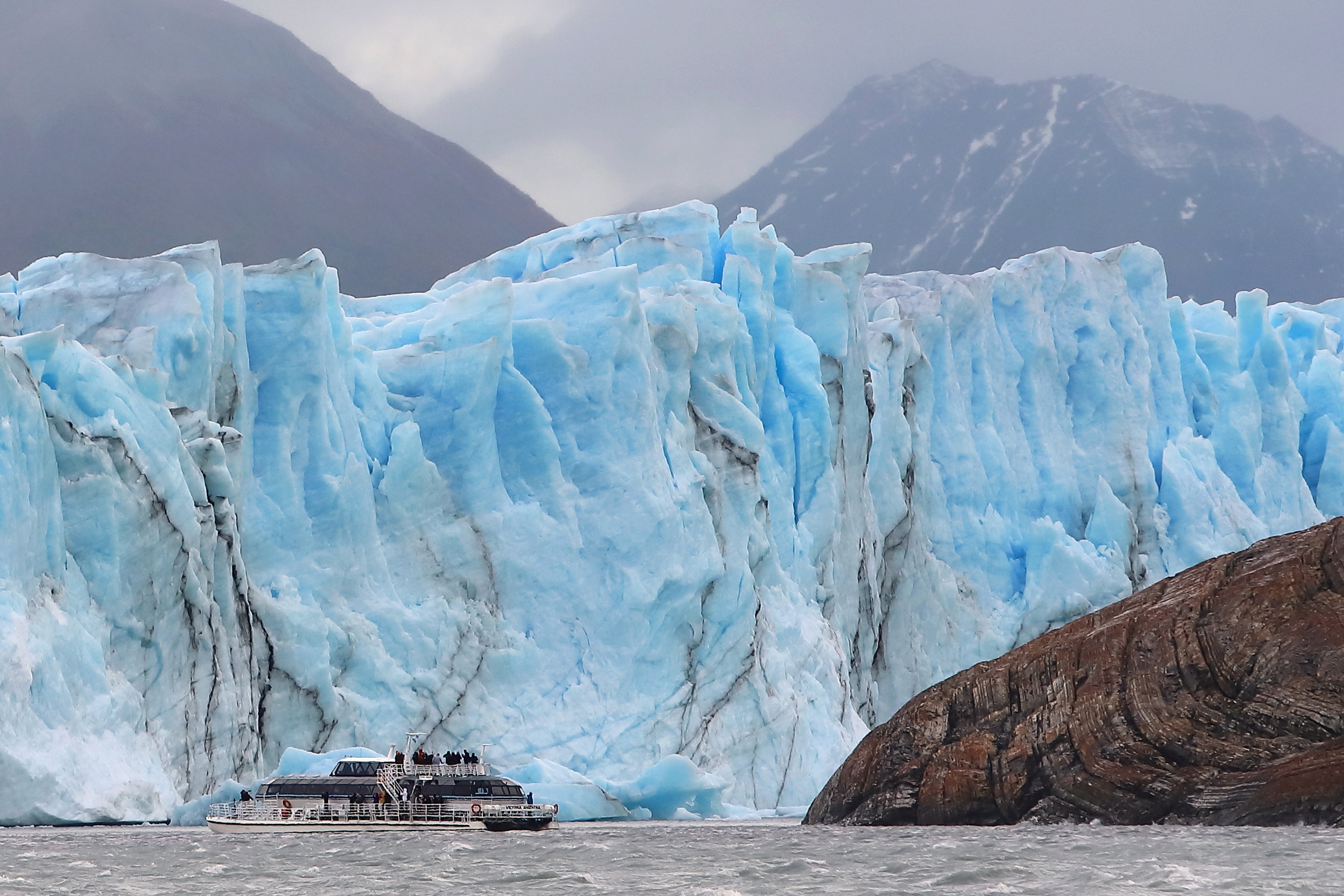
Many of the world’s glaciers contain significantly less ice than scientists previously estimated. That means some mountain communities that rely on melting ice may run out of fresh water faster, according to new research.
Glaciers in the Andes Mountains of South America, in particular, may contain far less ice than previous studies suggested. That means they may shrink faster than scientists expected, taking their valuable stores of fresh drinking water with them.
The study, led by Romain Millan of Grenoble Alpes University in France, uses satellite images to piece together the volume of ice contained in all the world’s glaciers — more than 200,000 of them in total.
The amount of ice a glacier contains depends not only on its surface area, but also on the thickness of the ice itself. Scientists have on-site measurements of ice thickness from only about 4,000 glaciers around the world. For the rest of them, they’ve had to make rough approximations based on what they know about the size of the glaciers.
Over the last decade or so, however, advances in satellite technology have made more precise estimates possible.
The new study uses a special technique that takes advantage of a unique physical characteristic of glacier ice. While it may appear to be frozen in place, it actually oozes, very gradually, like a slow-moving molasses. Thicker ice tends to flow faster than thinner ice. That means the speed of the ice can help scientists estimate how thick it is — and how much water it contains.
Millan and colleagues analyzed hundreds of thousands of satellite images taken of the same glaciers at different times. They compared the change, or flow, of the ice over time at each location and then used these calculations to estimate the amount of ice each glacier contains.
On the whole, averaged globally, they found that the world’s glaciers contain about 20 percent less ice than previous studies had suggested. If all of the glaciers were to suddenly melt away, they’d likely raise global sea levels by around 10 inches — that’s nearly 3 inches less than previously estimated.
But that’s not really an important takeaway of the research, according to study co-author Mathieu Morlighem, an ice expert at the University of California, Irvine, and Dartmouth University.
If global temperatures rose high enough for mountain glaciers to disappear, then sea-level rise contributions from the vast Greenland and Antarctic ice sheets — not included in this study — would also significantly accelerate. Their contributions, combined with the 10 inches of sea-level rise from the melted mountain glaciers, would cause catastrophic destruction around the globe.
The difference of an extra 3 inches, at that point, would be a drop in the bucket.
The more important message is that some mountain communities may be running out of fresh water faster than they anticipated.
There are exceptions. The researchers found that some parts of the world actually have more ice than previous studies had estimated. Parts of the high mountains of Asia, for example, may contain as much as 37 percent more ice than scientists previously believed.
Glaciers in these areas are still rapidly melting. It just means that communities there may have a bit more time to prepare for eventual water shortages.
In places like the tropical Andes, on the other hand, the opposite is true. Andes glaciers contain around 27 percent less ice than scientists previously estimated, according to the new study.
“Glaciers that have less mass will disappear quicker than the ones that are thicker than we thought,” Morlighem said. “They will have less time than we may have thought.”
That’s important information for policymakers in those regions. With glaciers shrinking away and taking their freshwater supplies with them, communities could be forced to consider their options to adapt.
The study also highlights the importance of swift action to curb global warming. While mountain glaciers are quickly melting all over the world, the speed at which they vanish will depend on how fast global temperatures rise over the coming decades.
“We’re witnessing today a disaster in slow motion,” Morlighem said. “Where we end up will still depend on how much carbon we put into the atmosphere.”
“The situation is not looking great,” he added. “But it could look worse.”
Reprinted from E&E News with permission from POLITICO, LLC. Copyright 2022. E&E News provides essential news for energy and environment professionals.
